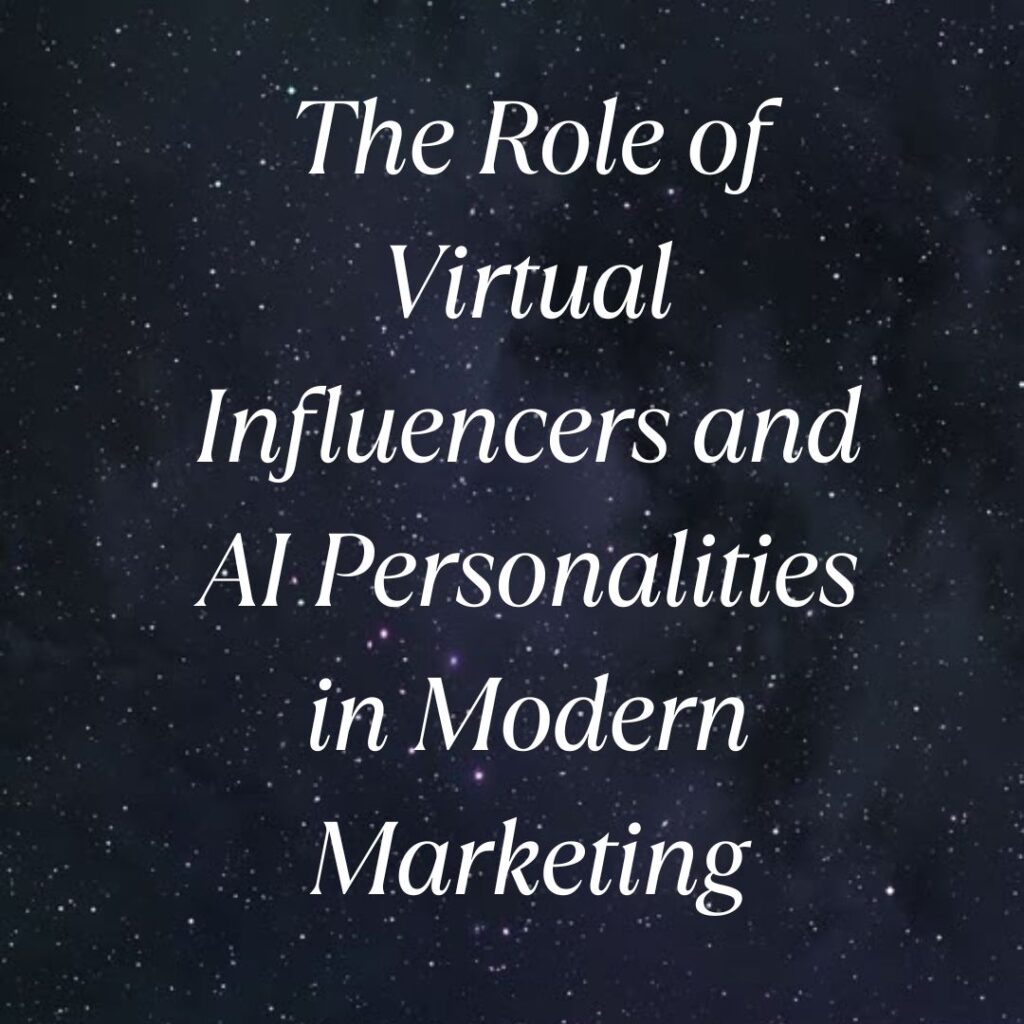In the fast-evolving landscape of marketing, a fascinating new trend has emerged: virtual influencers and AI personalities. These digital entities, often created using advanced artificial intelligence and computer-generated imagery (CGI), are revolutionizing how brands engage with consumers. This article explores their rise, impact, and future in modern marketing.
What are Virtual Influencers and AI Personalities?
Virtual influencers are computer-generated characters designed to resemble real-life influencers. They have their own personalities, lifestyles, and even social media presence. AI personalities, on the other hand, are virtual beings powered by artificial intelligence algorithms. They can interact with users in real-time, learning and adapting their responses based on data inputs.
The Rise of Virtual Influencers
The concept of virtual influencers gained traction around 2016 with characters like Lil Miquela, a virtual model and musician. These influencers, despite being entirely digital, amassed millions of followers on platforms like Instagram, engaging them with lifestyle content, fashion endorsements, and even social activism.
Why Are Brands Embracing Virtual Influencers?
- Authenticity and Control: Brands can meticulously control the narrative and image of virtual influencers, ensuring consistent messaging and brand alignment.
- Cost Efficiency: Compared to real-life influencers, virtual influencers require no physical presence or management fees, making them cost-effective for long-term campaigns.
- Innovative Content: Virtual influencers can participate in activities and settings impossible for humans, creating unique and visually compelling content that resonates with digital-savvy audiences.
Examples of Successful Campaigns
- Balmain x Shudu: Luxury fashion house Balmain collaborated with Shudu, a CGI model, for their campaign. Shudu’s digital presence allowed Balmain to showcase their designs in a futuristic and aspirational context, reaching a global audience interested in both fashion and technology.
- Savage X Fenty x Miquela: Rihanna’s lingerie brand collaborated with Lil Miquela, blending virtual creativity with real-world fashion campaigns. This partnership not only drove engagement but also sparked discussions on the future of beauty standards and inclusivity.
The Impact on Consumer Engagement
Virtual influencers and AI personalities excel in engaging younger demographics who are native to digital platforms. Their ability to create relatable content and participate in trending discussions keeps audiences hooked and actively participating in brand conversations.
Ethical Considerations and Challenges
- Transparency: Some consumers criticize virtual influencers for blurring the line between authenticity and fabrication. Maintaining transparency about their digital nature is crucial for ethical marketing practices.
- Job Displacement: As AI technologies advance, concerns arise about the potential displacement of human influencers and creators, highlighting broader societal impacts of automation in creative industries.
Future Trends and Innovations
Looking ahead, advancements in AI and CGI will likely enhance the capabilities of virtual influencers, making them more interactive and lifelike. Brands may increasingly leverage these technologies to personalize consumer experiences, from virtual try-ons to customized product recommendations.
Conclusion
Virtual influencers and AI personalities represent a paradigm shift in marketing, blending creativity with technological innovation. As brands navigate an increasingly digital marketplace, these digital personas offer new avenues for engagement and storytelling. While challenges persist, their growing influence underscores their relevance in shaping the future of consumer-brand relationships.
In conclusion, the integration of virtual influencers and AI personalities into modern marketing strategies not only reflects technological advancements but also reshapes how brands connect with their audiences in the digital age. As these technologies evolve, so too will their impact on consumer behavior and marketing practices worldwide.







